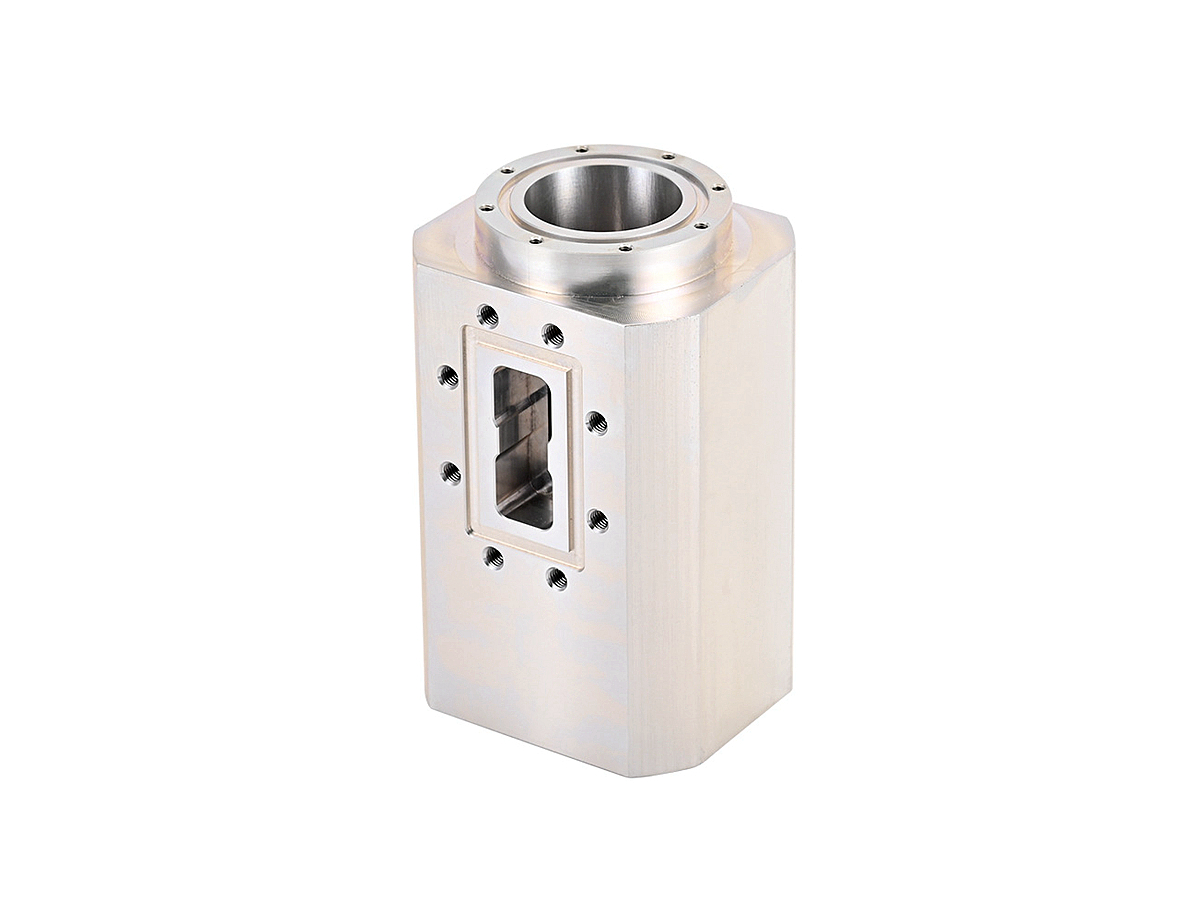Titanium Parts in Power Generation: How Multi-Axis CNC Machining Drives Efficiency
Introduction
The power generation industry demands components capable of withstanding extreme conditions, including high temperatures, corrosion, and mechanical stresses. Titanium, recognized for its excellent strength-to-weight ratio, high corrosion resistance, and thermal stability, has become a critical material for turbine blades, heat exchangers, and structural components within power plants.
Advanced multi-axis CNC machining significantly enhances the precision and efficiency in manufacturing titanium components. This machining process enables the production of intricate geometries, tight tolerances, and superior surface finishes, directly improving operational efficiency, reducing downtime, and extending component life.
Titanium Alloy Materials
Material Performance Comparison
Material | Tensile Strength (MPa) | Yield Strength (MPa) | Max Operating Temp (°C) | Typical Applications | Advantage |
|---|---|---|---|---|---|
900-1100 | 830-910 | 400-450 | Turbine blades, compressor discs | High strength-to-weight ratio, excellent corrosion resistance | |
950-1200 | 880-950 | 500-550 | Steam turbine components, heat exchanger parts | Exceptional thermal stability, superior creep resistance | |
860-950 | 795-870 | 350-400 | High-stress structural components | Improved toughness, excellent weldability | |
620-895 | 485-725 | 300-400 | Piping systems, heat exchangers | Superior weldability, good corrosion resistance |
Material Selection Strategy
Selecting appropriate titanium alloys involves precise consideration of operating parameters:
For turbine blades and compressor discs facing continuous mechanical stress and elevated temperatures up to 450°C, Ti-6Al-4V (Grade 5) provides optimal tensile strength (~1100 MPa) and excellent corrosion resistance.
High-temperature steam turbine components operating at temperatures of 550°C demand Ti-6Al-2Sn-4Zr-2Mo (Grade 4) due to its superior creep resistance and tensile strength of up to 1200 MPa.
Structural components that must endure stress loads and require exceptional toughness (~950 MPa tensile strength) and weldability benefit from Ti-6Al-4V ELI (Grade 23).
For heat exchanger tubes and piping systems operating at moderate temperatures around 400°C, Ti-3Al-2.5V (Grade 12) offers good weldability and adequate mechanical performance (tensile strength up to 895 MPa).
CNC Machining Processes
Process Performance Comparison
Multi-Axis CNC Machining Technology | Dimensional Accuracy (mm) | Surface Roughness (Ra μm) | Typical Applications | Key Advantages |
|---|---|---|---|---|
±0.02 | 1.6-3.2 | Brackets, basic structural parts | Cost-effective, efficient for simpler designs | |
±0.015 | 0.8-1.6 | Rotational parts, turbine supports | Improved accuracy, reduces setup time | |
±0.005 | 0.4-0.8 | Complex turbine blades, compressor discs | Exceptional precision, superior surface quality | |
±0.003-0.01 | 0.2-0.6 | Intricate power generation components | Highest accuracy, capable of complex geometries |
Process Selection Strategy
Selecting CNC machining processes is based on detailed complexity and precision requirements:
Components requiring standard precision (±0.02 mm) and simple geometries: 3 Axis CNC Milling is optimal for economical mass production.
Parts needing higher accuracy (±0.015 mm) and machining from multiple angles benefit from 4-axis CNC Milling, which reduces setup time and enhances overall precision.
Highly complex turbine components and compressor discs requiring dimensional accuracy of ±0.005 mm and surface roughness below 0.8 μm: 5 Axis CNC Milling delivers precise machining and superior finish quality.
Extremely intricate and precision-critical components with tolerances as tight as ±0.003 mm benefit from Precision Multi-Axis CNC Machining to ensure consistency and reliability.
Surface Treatment
Surface Treatment Performance
Treatment Method | Corrosion Resistance | Wear Resistance | Temperature Stability (°C) | Typical Applications | Key Features |
|---|---|---|---|---|---|
Excellent (>800 hours ASTM B117) | Moderate-High (HV350-500) | 300-400 | Structural frames, heat exchangers | Improved corrosion resistance, enhanced surface hardness | |
Outstanding (>1000 hours ASTM B117) | Very High (HV1500-2500) | 450-600 | Turbine components, wear surfaces | Excellent abrasion resistance, enhanced thermal protection | |
Excellent (700-900 hours ASTM B117) | Moderate | ≤300 | Precision valve components, cooling channels | Smooth, corrosion-resistant surfaces | |
Exceptional (>1000 hours ASTM B117) | High (HV1000-1200) | Up to 1150 | Turbine blades, combustion components | Reduces heat transfer, increases lifespan |
Surface Treatment Selection
Surface treatment selections involve precise assessment of environmental factors and application specifics:
Structural and external parts requiring corrosion resistance greater than 800 hours per ASTM B117 salt spray test and surface hardness around HV350-500: Anodizing ensures durable, long-term protection.
Components subjected to extreme wear and abrasion, demanding surface hardness up to HV2500: PVD Coating provides robust protection and excellent thermal stability up to 600°C.
Precise internal parts needing ultra-smooth surfaces (Ra ≤0.4 μm) and corrosion resistance: Electropolishing enhances fluid flow efficiency and minimizes corrosion initiation.
High-temperature turbine blades operating above 1000°C requiring effective thermal insulation and hardness above HV1000: Thermal Barrier Coating significantly extends component lifespan and operational efficiency.
Quality Control
Quality Control Procedures
Precise dimensional checks using Coordinate Measuring Machines (CMM) and optical comparators.
Surface roughness verification via advanced profilometers.
Mechanical testing, including tensile, yield strength, and fatigue performance (ASTM standards).
Non-destructive testing (NDT), including ultrasonic, radiographic, and eddy current inspections.
Corrosion resistance testing conforming to ASTM B117 (Salt Spray Test).
Comprehensive documentation adhering to ISO 9001, ASME, and ASTM standards specific to power generation equipment.
Industry Applications
Titanium Component Applications
High-performance turbine blades and compressor discs.
Heat exchanger and cooling system components.
Structural frames and supports in power generation facilities.
Precision piping systems and fittings.
Related FAQs:
Why is titanium ideal for power generation equipment components?
How does multi-axis CNC machining enhance efficiency in manufacturing titanium parts?
Which surface treatments are best suited for titanium components in power generation?
What quality standards ensure reliability in CNC-machined titanium parts?
How to select the appropriate titanium alloy for specific power generation applications?

